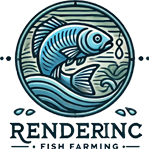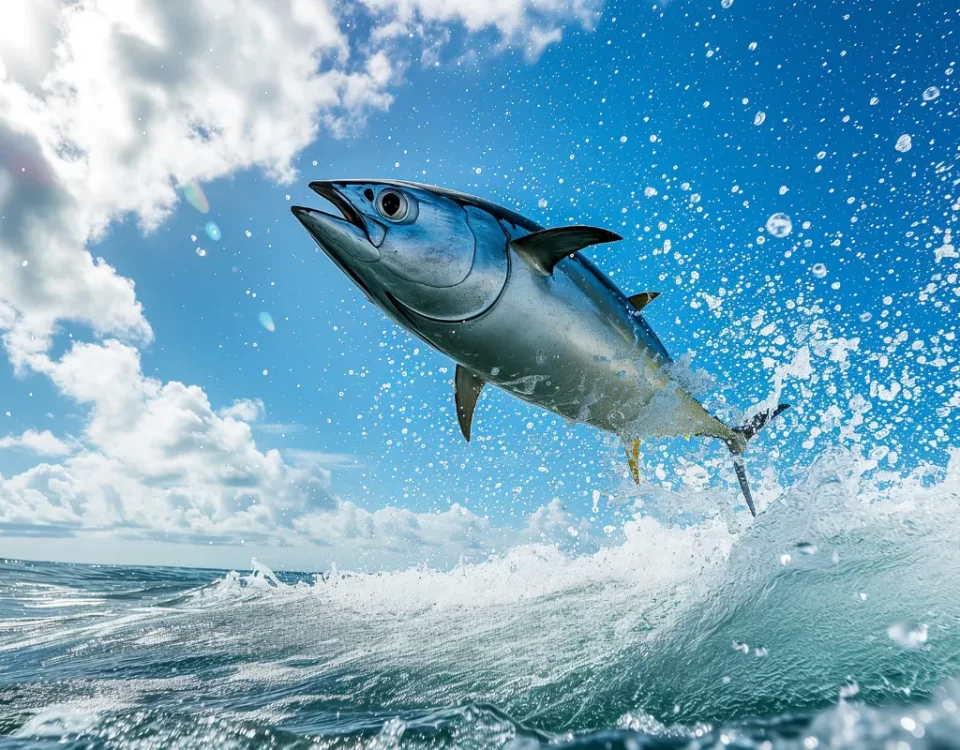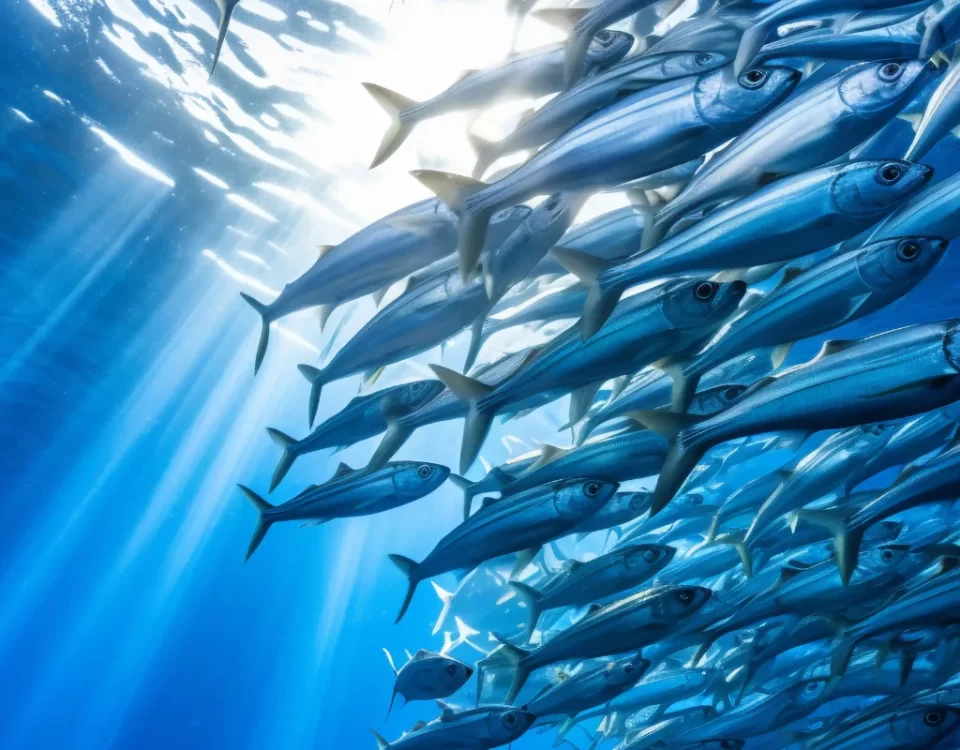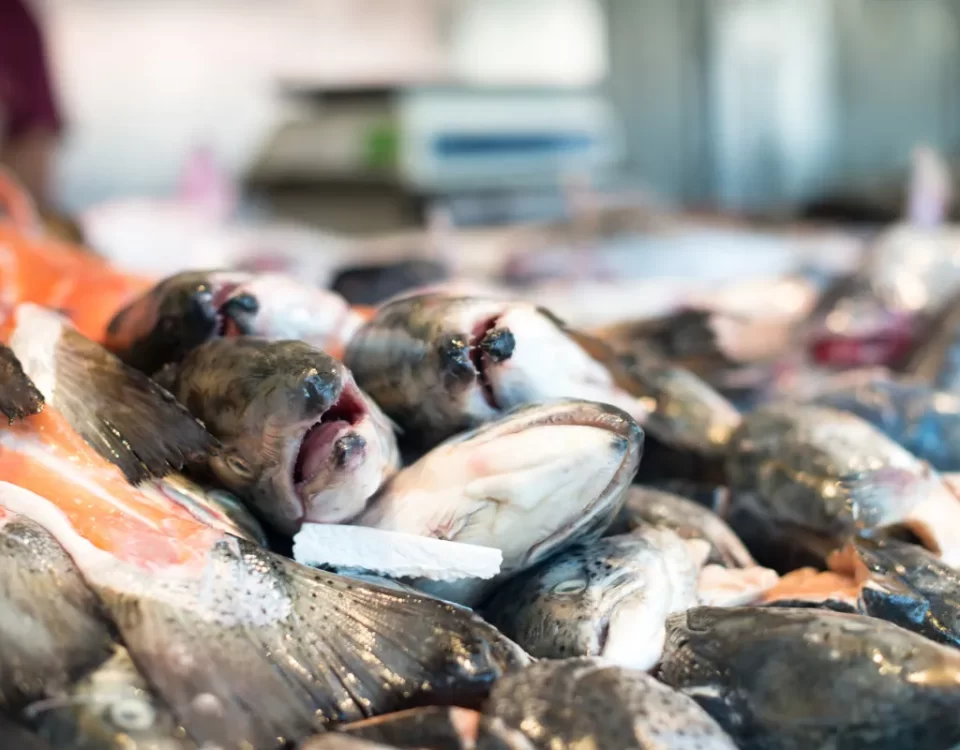Innovative Feeding Strategies for Healthier Fish in Aquaculture

Water Filtration Systems: Keeping Your Aquaculture Clean
setembro 16, 2024
Mastering Water Quality Management in Aquaculture
setembro 17, 2024In the realm of aquaculture, where the cultivation of aquatic organisms is a delicate art, the role of innovative feeding strategies cannot be overstated. As the demand for seafood continues to soar, fish farming practices must evolve to meet the dual challenge of sustainability and efficiency. It is within this dynamic landscape that the quest for healthier fish takes center stage, with a spotlight on the pivotal role that feeding plays in achieving this goal.
Improving fish health is not merely a matter of providing sustenance; it is a holistic approach that encompasses the entire ecosystem within which the fish thrive. By embracing advanced feeding techniques, aquaculturists aim to optimize growth rates, enhance disease resistance, and ultimately ensure the well-being of their aquatic charges. This paradigm shift heralds a new era of aquaculture where nutrition is not just about filling bellies but about nurturing vitality.
One of the key drivers behind the push for innovative feeding strategies in aquaculture is the recognition that traditional methods may fall short in meeting the evolving needs of fish populations. With factors such as environmental degradation, disease outbreaks, and fluctuating market demands constantly reshaping the aquaculture landscape, the time is ripe for a revolution in how we nourish our aquatic counterparts. By leveraging cutting-edge research and technology, aquaculturists can unlock new possibilities in enhancing both the physical and nutritional health of their fish stocks.
By delving deeper into the intricate relationship between nutrition and fish health, we uncover a wealth of opportunities to not only bolster the resilience of aquatic species but also to elevate the quality of the seafood that lands on our plates. As we embark on this journey towards optimal feeding practices in aquaculture, we are poised to witness a transformation that transcends mere sustenance, ushering in an era where every meal is a testament to the ingenuity and care with which we nourish our aquatic companions.
The Importance of Nutrition in Aquaculture
Nutrition plays a crucial role in the growth and development of fish in aquaculture. Just like any living organism, fish require a balanced diet to thrive and reach their full genetic potential. Essential nutrients such as proteins, fats, carbohydrates, vitamins, and minerals are vital for supporting various physiological functions in fish, including growth, reproduction, and immune system function.
Proper nutrition is not only important for promoting growth but also for maintaining optimal health in fish populations. When fish are provided with a diet that meets their nutritional requirements, they are less susceptible to disease outbreaks and stress-related issues. A well-balanced diet can help improve the overall immune response of fish, making them more resilient to pathogens and environmental challenges.
Inadequate nutrition can lead to various health problems in fish, such as stunted growth, reduced reproductive capabilities, and increased susceptibility to diseases. For example, a deficiency in key nutrients like essential amino acids or vitamins can impair the fish’s ability to metabolize nutrients efficiently, leading to growth retardation and compromised immune function. Proper nutrition is crucial for ensuring that fish in aquaculture systems are healthy and able to reach market size efficiently.
Innovative feeding strategies that focus on delivering optimal nutrition to fish can have a significant impact on the success of aquaculture operations. By formulating diets that are tailored to the specific nutritional needs of different fish species at various life stages, aquaculturists can promote growth, minimize feed wastage, and reduce the environmental impact of fish farming. With a holistic approach to nutrition management, aquaculture practitioners can enhance the health and well-being of their fish populations, ultimately leading to more sustainable and profitable operations.
Traditional Feeding Methods in Aquaculture
In aquaculture, traditional feeding methods have long been relied upon to provide essential nutrients to farmed fish. Pelleted feeds are one of the most common practices in aquaculture, where formulated feeds are compressed into small pellets for easy consumption by fish. These pellets typically contain a mix of protein, fat, carbohydrates, vitamins, and minerals to support the growth and development of fish. Manual feeding is another prevalent method, where feed is scattered directly into the water, allowing fish to feed at their own pace.
While traditional feeding methods have been effective in supplying necessary nutrients to fish, they do have limitations in promoting overall fish health. With pelleted feeds, there is often a risk of overfeeding, leading to potential water quality issues due to uneaten feed accumulating at the bottom of the aquaculture system. This can result in pollution, algal blooms, and deterioration of water quality, negatively impacting fish health. Additionally, manual feeding may not always ensure that each fish receives an adequate amount of feed, leading to inconsistent growth rates and nutritional deficiencies among the population.
Another challenge with traditional feeding methods is the limited control over feed composition and distribution. Pelleted feeds may not always align perfectly with the nutritional requirements of different fish species or developmental stages, potentially leading to suboptimal growth and health outcomes. Manual feeding also lacks precision in regulating the amount of feed given to each fish, which can result in uneven growth and wastage of feed. These limitations highlight the need for innovative feeding strategies in aquaculture to address these challenges and promote healthier fish populations.
Challenges in Aquaculture Feeding
In the realm of aquaculture, feeding practices play a crucial role in the overall health and growth of fish populations. However, numerous challenges lurk within the depths of this essential process, posing significant hurdles for fish farmers seeking to optimize their operations. One of the primary challenges faced in aquaculture feeding is wastage. Traditional feeding methods often result in excessive feed being dispersed into the water, leading to wastage and inefficient resource utilization. This not only impacts the economic sustainability of fish farming operations but also poses environmental concerns by contributing to water pollution.
Another issue that plagues aquaculture feeding is nutrient leaching. When excess feed or nutrients are not efficiently consumed by the fish, they can accumulate in the water, leading to nutrient leaching. This can disrupt the delicate balance of the aquatic ecosystem, causing algal blooms, oxygen depletion, and other detrimental effects. As a result, nutrient leaching not only affects the health and growth of fish within the aquaculture system but also poses significant risks to the surrounding environment.
The environmental impact of aquaculture feeding practices cannot be overlooked. Inefficient feeding methods can result in the release of nutrients and pollutants into the surrounding water bodies, leading to water pollution and ecosystem degradation. Moreover, the reliance on wild-caught fish for fish feed production further exacerbates the environmental impact of aquaculture operations. These environmental challenges not only hinder the health and growth of fish in aquaculture systems but also pose long-term sustainability concerns for the industry as a whole.
The interplay of these challenges in aquaculture feeding can have profound implications for the overall success of fish farming operations. Improving feeding strategies to address issues such as wastage, nutrient leaching, and environmental impact is essential for promoting the health and growth of fish populations in aquaculture systems. By implementing innovative feeding technologies and sustainable practices, fish farmers can mitigate these challenges, foster healthier fish populations, and contribute to the long-term sustainability of the aquaculture industry.
Innovative Feeding Strategies
In the realm of aquaculture, the quest for innovation is essential to meet the ever-growing demand for sustainable fish production. One promising avenue of exploration lies in the introduction of alternative feed sources to traditional fish diets. By looking beyond conventional feeds like fish meal and soybean, aquaculturists are discovering the potential of incorporating insects, algae, and probiotics into the feeding regimen of farmed fish.
The Rise of Alternative Feed Sources
Insects, once considered pests, are now being recognized for their nutritional value. Insects like black soldier fly larvae and mealworms are rich in protein, essential amino acids, and lipids, making them an attractive option for fish feed formulation. Furthermore, insects can be reared on organic waste, offering a sustainable solution to both feed sourcing and waste management in aquaculture operations.
Algae, another unconventional feed source, are nutrient-dense microorganisms that can provide essential vitamins, minerals, and omega-3 fatty acids to fish. By harnessing the power of algae, aquaculturists can enhance the nutritional profile of fish diets while reducing reliance on wild-caught fish for feed production.
The Benefits of Incorporating Innovation
Probiotics, beneficial bacteria that promote gut health, are gaining traction as a feed additive in aquaculture. By introducing probiotics into fish diets, aquaculturists can improve digestive efficiency, enhance disease resistance, and boost overall immune function in farmed fish. This proactive approach to fish health not only enhances production outcomes but also aligns with the principles of sustainable aquaculture.
Innovative feeding strategies not only contribute to the health and well-being of farmed fish but also have implications for the environmental sustainability of aquaculture. By diversifying feed sources and optimizing nutrient utilization, aquaculturists can move towards a more resilient and efficient production model that meets the needs of both present and future generations.
Automated Feeding Systems
In the realm of aquaculture, where precision and efficiency are paramount, automated feeding systems have emerged as a groundbreaking solution to optimize feed management and enhance the overall health of fish populations. Leveraging cutting-edge technology, these systems revolutionize the way feed is delivered to aquatic species, ensuring that each fish receives the perfect amount of food needed for growth and development.
Technological Precision in Feed Rations
One of the key advantages of automated feeding systems lies in their ability to provide precise and controlled feed rations to fish populations. Through the use of sophisticated sensors and software, these systems can tailor feeding schedules and portion sizes according to the specific needs of each fish species. By eliminating the guesswork associated with manual feeding practices, aquaculturists can now fine-tune their feeding strategies with pinpoint accuracy, leading to improved growth rates and overall fish health.
Enhanced Feed Efficiency and Waste Reduction
The implementation of automated feeding systems not only ensures optimal feed rations but also contributes to enhanced feed efficiency and waste reduction within aquaculture facilities. By delivering portioned feeds at regular intervals, these systems minimize feed waste caused by overfeeding or uneven distribution. Moreover, the real-time monitoring capabilities of automated feeders enable aquaculturists to adjust feeding schedules based on actual fish consumption patterns, further improving feed utilization and reducing environmental impact.
Sustainability and Future Prospects
As the aquaculture industry continues to evolve, automated feeding systems represent a crucial step towards achieving sustainable fish farming practices. By promoting resource efficiency and minimizing environmental impacts, these systems not only benefit fish health and growth but also contribute to the long-term viability of the aquaculture sector. Moving forward, further innovations in automated feeding technologies are expected to enhance feed management practices and foster a more efficient and ecologically responsible aquaculture industry.
Nutritional Supplements and Additives
In the realm of aquaculture, the role of nutritional supplements and additives cannot be overstated when it comes to enhancing fish health. Vitamins, minerals, and amino acids play vital roles in supporting the growth, immune function, and overall well-being of fish within aquaculture systems.
Importance of Vitamins, Minerals, and Amino Acids
Vitamins are essential organic compounds that serve as coenzymes in various metabolic processes, aiding in energy production, immunity, and overall growth. Minerals, on the other hand, are inorganic nutrients crucial for maintaining osmotic balance, skeletal development, and enzyme function within fish. Amino acids, the building blocks of proteins, play a pivotal role in growth, muscle development, and immune response in fish.
Functional Feeds for Disease Prevention
To bolster disease prevention and immune support in fish, innovative functional feeds have emerged as a promising strategy in aquaculture. These feeds are fortified with bioactive compounds such as β-glucans, immunostimulants, and probiotics, which enhance the fish’s immune system and reduce the susceptibility to pathogens. By incorporating these bioactive compounds into fish diets, aquaculturists can promote a healthier gut microbiota and boost disease resistance in their fish stocks.
Bioactive Compounds for Immune Support
Bioactive compounds, including antioxidants, polyunsaturated fatty acids, and plant extracts, have shown great potential in improving fish health and resilience. These compounds possess anti-inflammatory and antimicrobial properties, aiding in the prevention of common fish diseases and promoting overall well-being. By incorporating these bioactive compounds into fish feed formulations, aquaculturists can optimize the immune function of their fish and reduce the reliance on antibiotics, thereby promoting a more sustainable aquaculture industry.
Future Directions in Nutritional Supplements
As the aquaculture industry continues to evolve, ongoing research into novel nutritional supplements and additives holds promise for advancing fish health and sustainability. By optimizing the nutritional content of fish feeds and harnessing the power of bioactive compounds, aquaculturists can cultivate healthier fish stocks, reduce disease outbreaks, and contribute to the growth of a more resilient and sustainable aquaculture sector.
Precision Feeding Techniques
In the realm of aquaculture, precision feeding emerges as a cutting-edge approach to enhancing fish health and performance. This method revolves around the meticulous adjustment of feed quantities and compositions tailored to the specific needs of different fish species, sizes, and metabolic requirements. By taking into account these crucial factors, aquaculturists can achieve remarkable results in terms of growth rates, overall health, and feed conversion ratios.
Tailored Feeding Based on Fish Species
Each fish species possesses unique dietary preferences and nutritional requirements. Precision feeding involves customizing feed formulations to meet the precise needs of various species, ensuring they receive the essential nutrients for optimal health and growth. For example, carnivorous fish such as salmon may require a diet high in proteins and fats, while herbivorous fish like tilapia might thrive on plant-based feeds rich in fiber and carbohydrates.
Adjusting Feeds According to Fish Size
As fish grow, their nutritional needs evolve accordingly. Employing precision feeding allows aquaculturists to adapt feed quantities and compositions as fish progress through different growth stages. By scaling up or down the feed rations based on the size of the fish, it becomes possible to prevent overfeeding or underfeeding, promoting healthy development and maximizing growth potential.
Optimization of Feed Conversion Ratios
The ultimate goal of precision feeding is to achieve efficient feed utilization and minimize waste in aquaculture operations. By precisely matching the feed provided to the fish’s metabolic demands, aquaculturists can enhance feed conversion ratios, translating into cost savings and reduced environmental impact. Through continuous monitoring and adjustment of feeding regimes, operators can fine-tune their practices to achieve optimal efficiency and sustainability.
Monitoring and Data-Driven Decision Making
Incorporating technological advancements such as automated feeding systems and smart sensors enables real-time monitoring of fish behavior, feed consumption patterns, and environmental conditions. This data-driven approach empowers aquaculturists to make informed decisions regarding feeding schedules, nutrient requirements, and overall management practices. By harnessing the power of data analytics, precision feeding can be further refined to meet the dynamic needs of fish populations and drive continual improvements in aquaculture operations.
Environmental Considerations in Feeding
When considering feeding strategies for aquaculture, it is crucial to address the sustainability issues related to aquaculture feeds and feed production. The traditional feed sources often rely heavily on wild-caught fish and unsustainable agricultural practices, leading to habitat destruction and overfishing. To combat these challenges, innovative feed alternatives are being explored to promote both fish health and environmental sustainability.
Sustainable Feed Production
One crucial aspect of environmental considerations in feeding is the sustainability of feed production itself. Sustainable feed production focuses on utilizing alternative ingredients such as plant-based proteins, algae, and insects. By incorporating these alternative ingredients, aquaculture feeds can reduce the reliance on wild-caught fish as a primary protein source, thus alleviating pressure on marine ecosystems.
Eco-Friendly Feed Alternatives
Exploring eco-friendly feed alternatives offers a promising avenue for promoting both fish health and environmental sustainability. Plant-based feeds, for example, can provide a nutrient-rich diet for fish while reducing the environmental footprint associated with traditional fishmeal production. Additionally, algae-based feeds are rich in essential nutrients and can be produced with minimal environmental impact, making them a viable option for sustainable aquaculture practices.
Minimizing Environmental Impact
Innovative feed strategies aim to minimize the environmental impact of aquaculture operations through resource efficiency and waste reduction. By optimizing feed formulations and utilizing recycled nutrients, aquaculture producers can reduce the waste output from fish farming operations. Additionally, incorporating feed additives that enhance nutrient absorption in fish can help optimize feed conversion ratios, further reducing the overall environmental impact of aquaculture feeding practices.
Conclusion
In conclusion, environmental considerations in feeding are paramount for ensuring the long-term sustainability of aquaculture operations. By exploring sustainable feed production methods, embracing eco-friendly feed alternatives, and minimizing environmental impact through resource efficiency, aquaculture producers can promote healthier fish populations while mitigating their environmental footprint. Embracing innovation in feeding strategies is not only beneficial for fish health but also essential for preserving the delicate balance of our marine ecosystems.
Case Studies and Success Stories
In the realm of aquaculture, where the quest for healthier fish and sustainable practices is paramount, several industry pioneers have showcased the remarkable results of implementing innovative feeding strategies. These case studies serve as beacons of inspiration for the aquaculture community, demonstrating the potential for positive outcomes in terms of fish health, growth rates, and environmental sustainability.
Sustainable Feeding Practices at Oceanus Pacific Aquafarms
Oceanus Pacific Aquafarms, located off the coast of California, has gained widespread recognition for its forward-thinking approach to feeding its fish. By incorporating a unique blend of plant-based proteins and algae supplements into their feed formulations, they have achieved remarkable results. Not only have the fish at Oceanus Pacific demonstrated enhanced growth rates, but they have also exhibited increased resistance to diseases. This success story highlights the potential of sustainable feeding practices in promoting both fish health and environmental stewardship.
The Aquatic Symphony: Harmony Farms’ Innovative Feeding Regimen
Harmony Farms, nestled in the lush countryside of Norway, has redefined the art of fish feeding through its innovative approach. By leveraging precision feeding techniques, tailored to the specific nutritional needs of each fish species, Harmony Farms has witnessed a significant improvement in feed conversion ratios and overall fish health. This meticulous attention to detail has not only resulted in higher-quality fish but has also positioned Harmony Farms as a leader in sustainable aquaculture practices.
Revolutionizing Aquafeed: NexGen Aquaculture’s Breakthrough Formulations
NexGen Aquaculture, a rising star in the aquafeed industry, has captured the spotlight with its revolutionary feed formulations. By harnessing the power of microbial additives and novel protein sources, NexGen has unlocked a new realm of possibilities for enhancing fish nutrition. Aquaculture operations that have adopted NexGen’s feeds have reported a myriad of benefits, including improved gut health, enhanced growth rates, and reduced environmental impact. This success story underscores the transformative potential of next-generation aquafeed in shaping the future of sustainable fish farming.
A Symphony of Success: The Confluence of Innovation and Sustainability
As these case studies illuminate, the fusion of innovation and sustainability in aquaculture holds immense promise for enhancing fish welfare and preserving our aquatic ecosystems. By embracing novel feeding strategies rooted in scientific rigor and environmental consciousness, aquaculture practitioners can pave the way for a healthier, more resilient future for both fish and humankind.
In conclusion, the adoption of innovative feeding strategies in aquaculture can yield a myriad of benefits for both fish health and overall farm productivity. By incorporating advanced techniques such as precision feeding, nutrient optimization, and real-time monitoring, fish farmers can enhance the nutritional value of feed, reduce waste, and ultimately promote the health and well-being of their aquatic livestock.
One of the key advantages of embracing these cutting-edge feeding methods is the ability to optimize growth rates and feed conversion ratios, leading to increased profitability for aquaculture operations. By ensuring that fish receive the optimal balance of nutrients at each stage of their development, farmers can achieve higher growth rates and improved feed efficiency, resulting in healthier, more robust fish that reach market size more quickly.
Furthermore, advanced feeding strategies can play a crucial role in environmental sustainability within the aquaculture industry. By reducing the amount of excess nutrients released into the water through efficient feeding practices, farmers can minimize the risk of pollution and algal blooms, safeguarding the delicate ecosystems in which their farms are situated. This not only benefits the local environment but also enhances the long-term viability of fish farming operations.
In light of these compelling advantages, I strongly encourage fish farmers to explore and implement these innovative feeding techniques in their own aquaculture practices. By staying abreast of the latest developments in feed technology and management practices, farmers can not only improve the health and productivity of their fish but also contribute to the sustainability of the aquaculture industry as a whole. Embracing innovation in feeding strategies is not just a means to an end but a pathway to sustainable growth and success in the dynamic world of fish farming.

Michael Rivers is an experienced aquaculture enthusiast with over a decade of hands-on knowledge in fish farming and sustainable aquatic systems. Passionate about promoting eco-friendly practices, he shares his expertise on fish breeding, water management, and the latest advancements in aquaculture technology. Through his blog, Michael aims to help both beginners and seasoned fish farmers achieve success in their ventures while contributing to the growth of sustainable food production.




